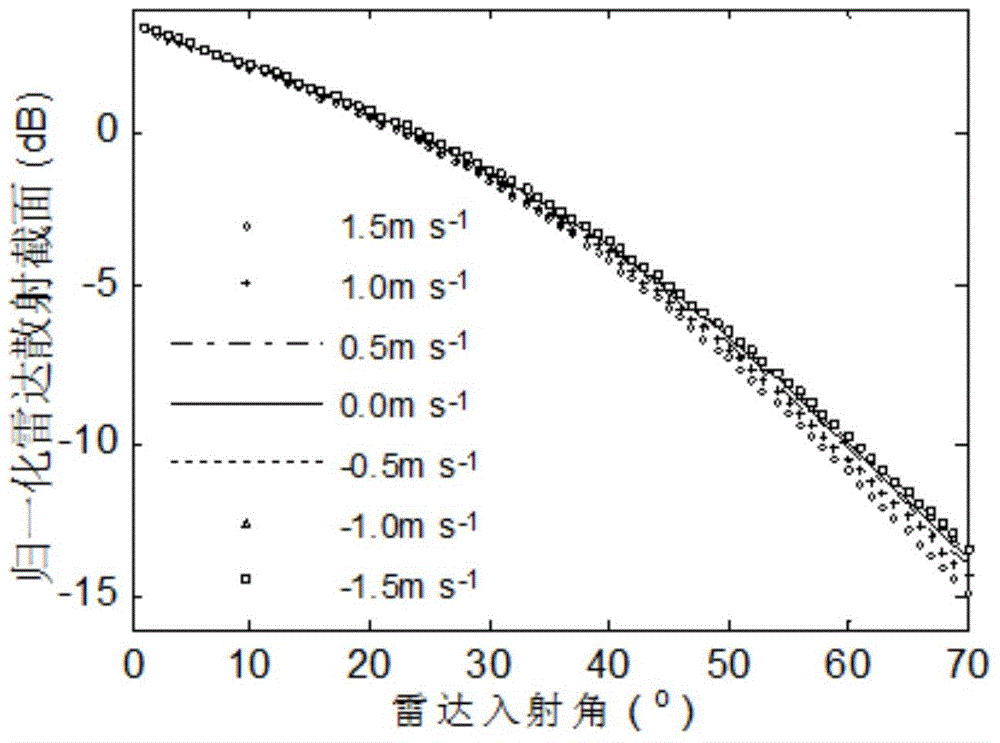Numerical simulation method for radar backscattering section of wave-current coupling sea surface
A technology of backscattering cross-section and sea surface simulation, applied in electrical digital data processing, special data processing applications, instruments, etc., can solve the problem that the interaction mechanism is not fully understood, and cannot meet quasi-real-time, large-area simultaneous measurement, and ocean current remote sensing Problems such as the lack of inversion methods, to achieve the effect of promoting research
- Summary
- Abstract
- Description
- Claims
- Application Information
AI Technical Summary
Problems solved by technology
Method used
Image
Examples
Embodiment Construction
[0022] The present invention will be further described below in conjunction with the accompanying drawings.
[0023] The technical problem to be solved by the present invention is: to obtain the relationship between wave-current coupled sea surface and electromagnetic wave interaction. In order to solve this technical problem, the present invention proposes the following technical solutions:
[0024] Include the following steps:
[0025] Step 1: Set sea surface simulation parameters and radar parameters, sea surface simulation parameters include: effective wave height h s , wave dominant wavelength λ 0 , amplitude and frequency scale factor b, fractal sea surface roughness coefficient s and main wave wave number Κ 0 =2π / λ 0 ;Radar parameters include: radar exposure scale range L, radar incident angle θ, radar wavelength λ, radar incident wave number k=2π / λ;
[0026] Step 2: Calculate the sea surface height according to the sea surface simulation parameters and radar parame...
PUM
 Login to View More
Login to View More Abstract
Description
Claims
Application Information
 Login to View More
Login to View More - R&D
- Intellectual Property
- Life Sciences
- Materials
- Tech Scout
- Unparalleled Data Quality
- Higher Quality Content
- 60% Fewer Hallucinations
Browse by: Latest US Patents, China's latest patents, Technical Efficacy Thesaurus, Application Domain, Technology Topic, Popular Technical Reports.
© 2025 PatSnap. All rights reserved.Legal|Privacy policy|Modern Slavery Act Transparency Statement|Sitemap|About US| Contact US: help@patsnap.com



